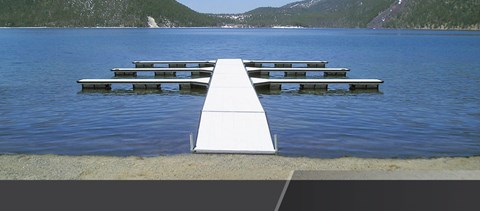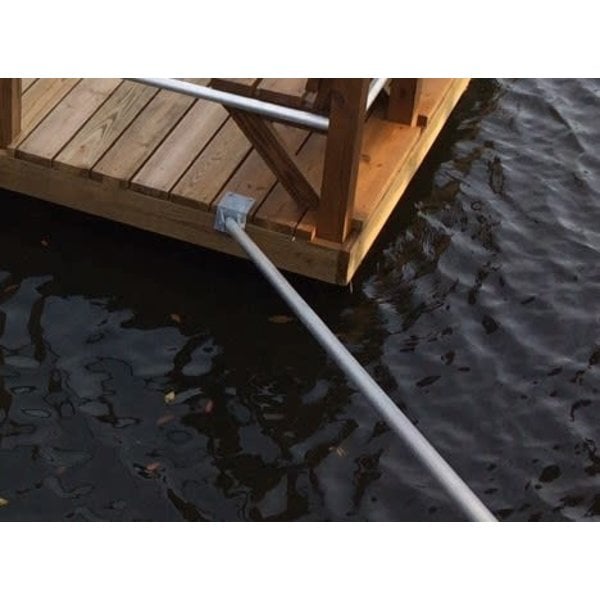Crafting Custom Solutions: Why a Floating Dock Builder is Necessary for Distinct Needs
Crafting Custom Solutions: Why a Floating Dock Builder is Necessary for Distinct Needs
Blog Article
Upgrade Your Waterfront With Long Lasting Floating Docks
Upgrading your waterfront with durable floating docks can substantially boost both capability and appearances, providing a functional option for different water activities. With an array of materials offered, including low-maintenance alternatives and typical timber, choosing the appropriate dock can match your individual style and fulfill practical requirements.
Benefits of Floating Docks
Floating docks offer a multitude of benefits that enhance their appeal for numerous maritime applications. Unlike standard fixed docks, floating docks surge and autumn with the trend, making certain constant access for boats and watercraft regardless of ecological problems.
Additionally, floating docks are less complicated to install and move, offering flexibility for seasonal or temporary use. Their modular layout enables customization to fit certain requirements, whether for personal marinas, property beachfronts, or business applications.
Furthermore, floating docks produce minimal disruption to the marine atmosphere, protecting neighborhood ecosystems and minimizing the possibility of disintegration. They additionally give improved safety and security and stability for customers, as their buoyant nature uses an extra flexible surface area than inflexible structures.
In addition, floating docks can promote a diverse variety of tasks, such as angling, swimming, and recreational boating, making them a beneficial property for waterside growth. Their flexibility and usefulness make floating docks a recommended option for a variety of naval jobs.
Selecting the Right Products
Selecting ideal products for floating docks is essential to their durability, performance, and general effectiveness. When choosing products, think about factors such as ecological direct exposure, upkeep demands, and architectural integrity. Common materials include timber, plastic, light weight aluminum, and composite alternatives, each offering distinct advantages and drawbacks.
Timber, while aesthetically pleasing, requires routine maintenance to stop rot and degeneration. Pressure-treated wood can boost sturdiness, however it may still give in to water damages in time. Plastic floats, commonly made from high-density polyethylene, are resistant to deterioration and call for minimal upkeep, making them an attractive option for low-maintenance applications.
Aluminum is one more viable alternative, recognized for its strength and light-weight homes. It is immune to corrosion and can endure extreme climate condition, although it may be a lot more costly than other materials. Compound products combine the very best attributes of timber and plastic, offering a resilient and low-maintenance alternative that mimics the appearance of wood without the connected disadvantages.
Eventually, the selection of material need to straighten with the intended usage, environmental considerations, and spending plan restrictions, ensuring a practical and durable floating dock that fulfills your particular demands.
Installation Process Review
The successful setup of a drifting dock counts on cautious preparation and execution, making sure that it runs successfully in its designated setting. The initial step includes assessing website problems, including water deepness, coastline functions, and prevailing weather patterns, which will certainly inform the dock design and anchoring system.
Following the site evaluation, the following stage is to prepare the floating dock elements. This consists of constructing the structure, securing drifts, and affixing any type of necessary hardware. It is important to ensure that all links are water-resistant and durable to stand up to marine problems.
Once the dock is constructed, the installation process starts with placing the dock in the water. This can involve a crane or various other training devices, especially for larger structures. Correct alignment is essential for functionality and safety and security.

Upkeep Tips for Durability
Routine upkeep is necessary for making sure the long life and optimal performance of a floating dock. To achieve this, begin with regular assessments a minimum of two times a year, concentrating on the honesty of the dock's framework, including the flotation tools and connecting equipment. Search for indicators of damages, wear, or rust, and attend to any problems without delay to stop additional deterioration.
Cleaning up is an additional important facet of maintenance. Get rid of particles, algae, and barnacles from the dock's surface to avoid unsafe conditions and preserve aesthetic allure. Make use of a soft brush and a mild cleaning agent to avoid damaging the dock's materials.
Furthermore, ensure that the dock is properly anchored and secured to stand up to seasonal adjustments in water degrees and weather. Examine the anchoring system for stability and make changes as required.
Enhancing Your Outside Aesthetic
To create a visually appealing outdoor area, incorporating a drifting dock can dramatically enhance the overall visual of your beachfront residential or commercial property. Floating docks are not just practical but can likewise work as a striking focal factor that matches the natural surroundings - floating docks. Readily available in different products and designs, these docks can be tailored to match your property's architectural design and landscape
The enhancement of ornamental aspects, such as integrated illumination or elegant railings, even more raises the dock's aesthetic charm. Consider utilizing natural wood coatings, which mix seamlessly with the environment, or choosing modern products like light weight aluminum or composite outdoor decking that use a sleek, contemporary appearance.
Tactically placing planters or seating click for info areas on or around the dock can produce welcoming areas that encourage relaxation and enjoyment of beachfront views. Furthermore, incorporating shades and textures that balance with your landscape will create a cohesive aesthetic throughout your outside location.

Final Thought

Updating your waterside with durable floating docks can dramatically boost both capability and looks, supplying a versatile remedy for different water tasks. Unlike standard fixed docks, floating docks increase and fall with the tide, guaranteeing regular availability for boats and watercraft regardless of ecological conditions.Choosing suitable materials for floating docks is important to their longevity, performance, and overall efficiency.As soon as the dock is constructed, the setup process begins with placing the dock in the water.In recap, floating docks offer numerous advantages, including versatility to water degree adjustments and a selection of material options.
Report this page